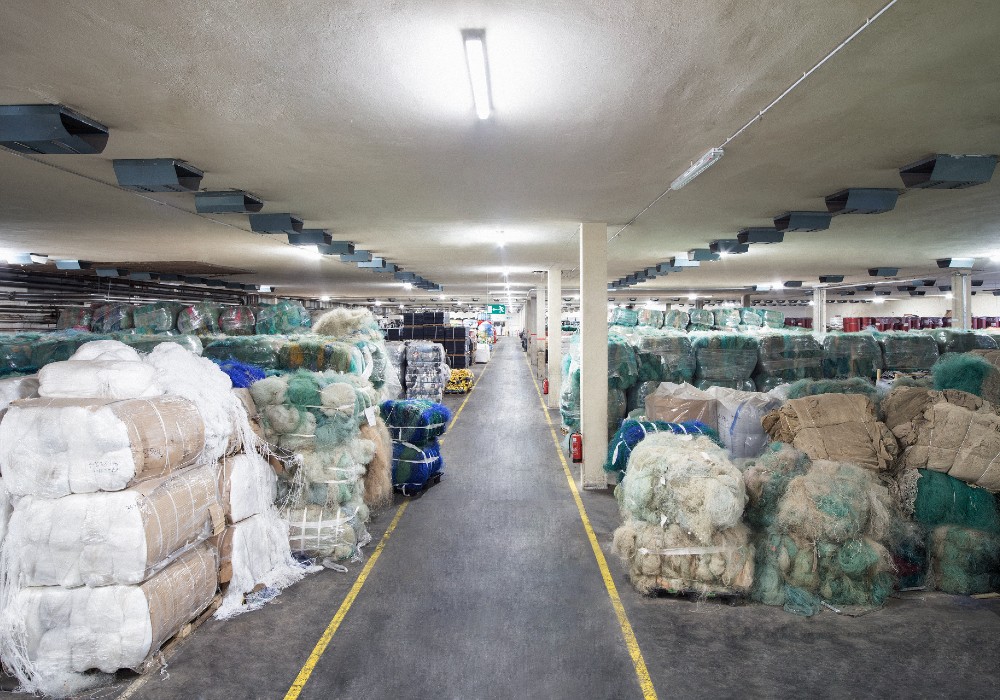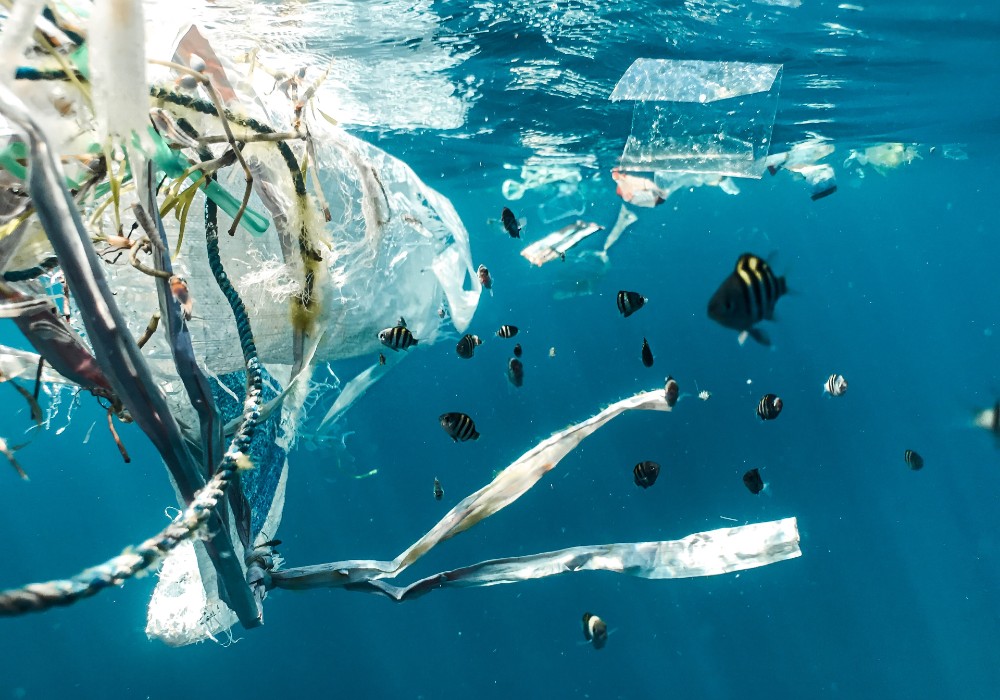60 Billion Garments Get Thrown Away Each Year. Some Brands Are Taking Urgent Action
How 3 brands are playing their sustainable part in responding to the global waste problem

Key takeaways from this article
- Up to 100 billion garments are produced annually, far surpassing global demand, leading to a significant surplus in clothing.
- A substantial portion of these garments never gets sold, and at least three out of five purchased items are discarded within a year, contributing to the massive 92 million tons of textile waste each year.
- Most of the materials used in the fashion industry release microparticles.
- In response to this crisis, innovative brands such as PANGAIA, Stella McCartney, and ECONYL® are supporting a more sustainable fashion by creating responsible alternatives.
Up to 100 billion garments are produced each year.[1] Just to put this into perspective, the Earth’s population is 8 billion. For supply to meet demand, that would mean that every single human being on the planet would be buying 12-14 pieces of clothing each year. We know that’s not true.
So, what happens to the excess clothing?
A significant portion of these garments, between 15 and 45 billion, never find a buyer in the first place.[2] For those that get purchased, at least three out of five articles of clothing are discarded within just a year of production,[3] contributing to the 92 million tons of textile waste dumped in landfills each year.[4] This equates to a continuous stream of waste, akin to a garbage truck of clothing being dumped every second.

Synthetic clothing, accounting for 60% of the total fashion production,[5] further exacerbates the environmental crisis. Made of plastic such as polyester, nylon, acrylic, spandex (also called Lycra or elastane, generically a PU), polyolefin, or other synthetic polymers, the clothing releases harmful microparticles into our planet. As a consumer, we can take immediate responsible actions and make conscious choices.
So, where do we go from here, and what are companies doing about it?
Addressing the global waste crisis, many brands are now offering more responsible alternatives to reduce landfill waste. Here are three examples of commitment to reduce our environmental footprint.
3 ways to assuage the problem
- PANGAIA is a “materials science” clothing brand that champions sustainable fabric innovation and environmental efforts. Embracing minimalist, eco-friendly designs, they’ve pioneered plant-based denim from hemp and a floral alternative to feather down. Their “Bee the Change” initiative addresses declining bee populations, aiming to raise $1 billion for conservation and foster collaborative solutions, underscoring PANGAIA’s commitment to sustainability.
- Stella McCartney, a leader in luxury eco-fashion, is known for its eco-conscious materials, like grape-based leather alternatives made from 80% recycled waste, including ECONYL® nylon. Their animal-free leather is 24 times less impactful on the environment than traditional animal-based materials.[6] The brand also uses blockchain for transparent, sustainable supply chain tracking, offering consumers environmentally responsible options.
- ECONYL® Brand, a trademark of Aquafil, is innovating the textile industry by recycling discarded nylon, like old carpets, fishing nets, and plastic scraps, into high-quality, reusable nylon that lives on infinitely. This process significantly reduces the environmental impact if compared with standard nylon from fossil fuels. As part of its mission, Aquafil, the Company that produces ECONYL® regenerated nylon, co-founded the Healthy Seas Foundation, focusing on marine conservation and education.
These are just three worth mentioning, but many other brands are also making similar strides, each worth exploring. Just think, by supporting these brands, you’ll take tangible steps to address environmental challenges. Every conscious choice represents a significant stride towards more sustainable practices. Which sustainable consumer are you?
Stay tuned for our next article, where we take a deeper dive into this issue. We’ll be interviewing Healthy Seas to uncover more about the battle against plastic pollution and how sustainable practices like those of ECONYL® are making a real difference.
[1] “17 Most Worrying Textile Waste Statistics & Facts,” TheRoundup.org. Available at: https://theroundup.org/textile-waste-statistics/
[2] ” Why Are Billions Of Clothes Never Even Sold?,” British Vogue. Available at: https://www.vogue.co.uk/article/overproduction-fashion
[3] “Fashion’s Problems,” Clean Clothes Campaign. Available at: https://cleanclothes.org/fashions-problems/waste-and-pollution
[4] “17 Most Worrying Textile Waste Statistics & Facts,” TheRoundup.org. Available at: https://theroundup.org/textile-waste-statistics/
[5] “17 Most Worrying Textile Waste Statistics & Facts,” TheRoundup.org. Available at: https://theroundup.org/textile-waste-statistics/
[6] “Stella McCartney Vegetarian Leather.” Available at: https://www.stellamccartney.com/us/en/sustainability/vegetarian-leather.html
Author: Giuseppe Scandariato
Latest from the Magazine